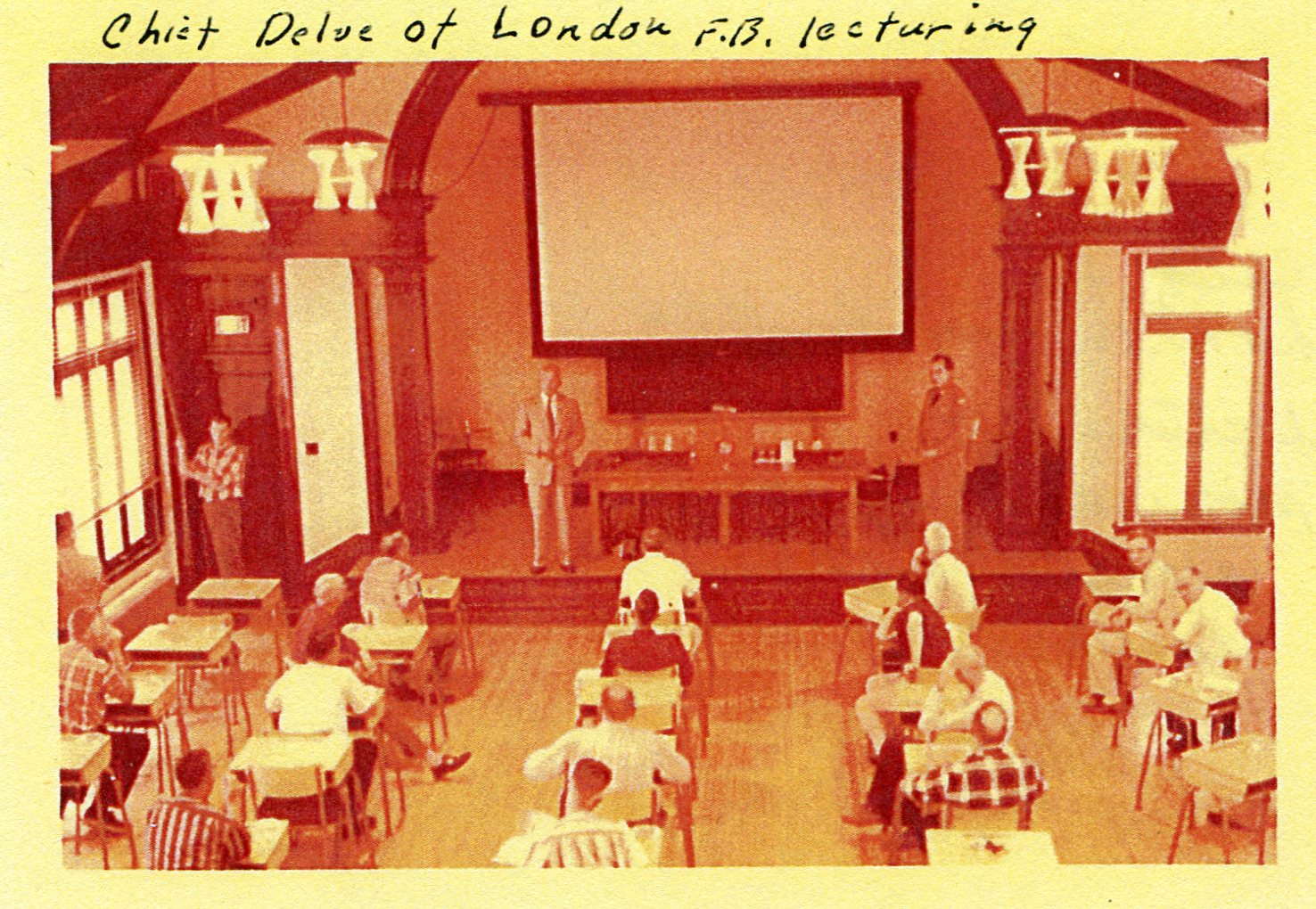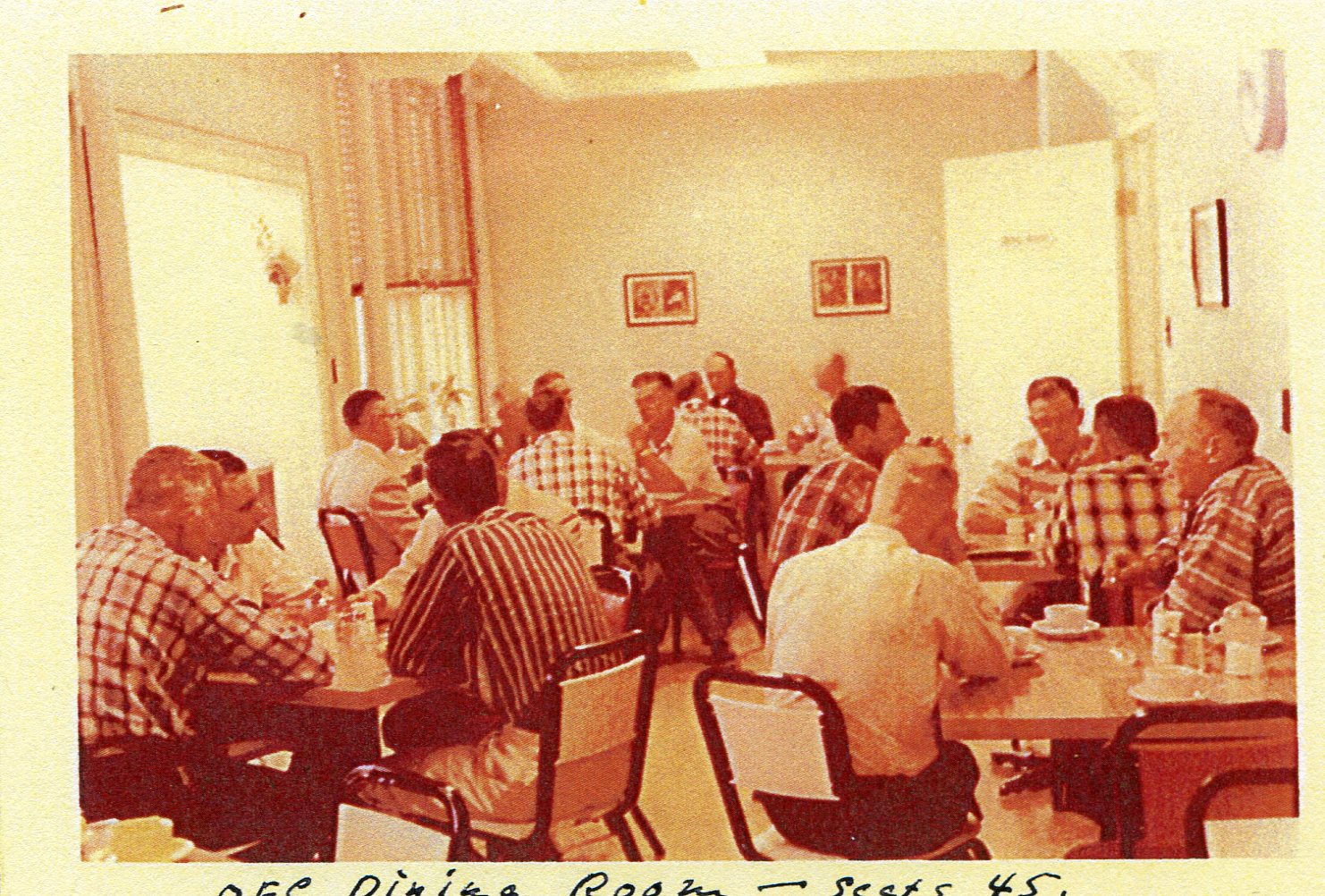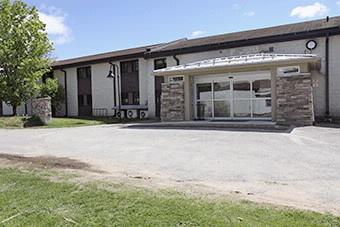Over time, Ontario’s fire college expanded resources, improving methods and keeping pace with different types of fire threats. Its library alone, developed by Judy Humphries and her staff, became a unique resource not only for students coming to Gravenhurst but for the Ontario Fire Marshal’s office in Toronto. As research librarian she fielded inquiries not only from Ontario fire chiefs but across Canada and abroad.
 |
| Early days in the Ontario Fire College lecture room in Scott Hall, instruction by the Fire Chief of London, England. |
Over time, Ontario’s police college at Aylmer outgrew the temporary buildings of the Commonwealth Air Training Program and by 1976 moved into new $28-million facilities on its 120-hectares: living accommodation for over 500 students and instructors, dining hall, new classrooms and auditoriums, forensic laboratory, library, improved physical fitness facilities, indoor and outdoor firing ranges, and a 3-kilometre driver training track. Today the College, one of North America’s largest police training facilities, hones skills of more than 8,000 recruits, police officers, and civilian personnel on campus every year.
Meanwhile, rather than building a new multimillion dollar facility at Gravenhurst, the province followed a different model by devolving Fire College courses to regional instruction centres across the province, ostensibly to train more firefighters for less cost. The government now proposes closing this College on March 31, 2021.
 |
| The Fire College dining room, with capacity for 45, facilitated bonding of Ontario’s top firefighters during their training in Muskoka. |
However, whether general training is centralized for police or decentralized for firefighters, specialization remains paramount for first responders, more today than ever. That is why Ontario Police College offerings are supplemented by advanced training away from Aylmer. At Gravenhurst alone, for example, the OPP trains its summer waterway boat patrols, its K-9 core, and its explosives experts, while in Simcoe County it provides para-military training for officers responding to terrorists.
 |
| Added facilities include Ontario Fire College’s 100 residence rooms, meeting halls, computer facilities, student lounge, dining hall, and kitchens. |
In this same universe, the Fire College in Muskoka should continue, a well-established centre for advanced training in special and high-risk roles that cannot be effectively taught in scattered regional centres, maintaining the unique role it discretely launched in the 1950s by training firefighters to handle radioactive risks in their communities.